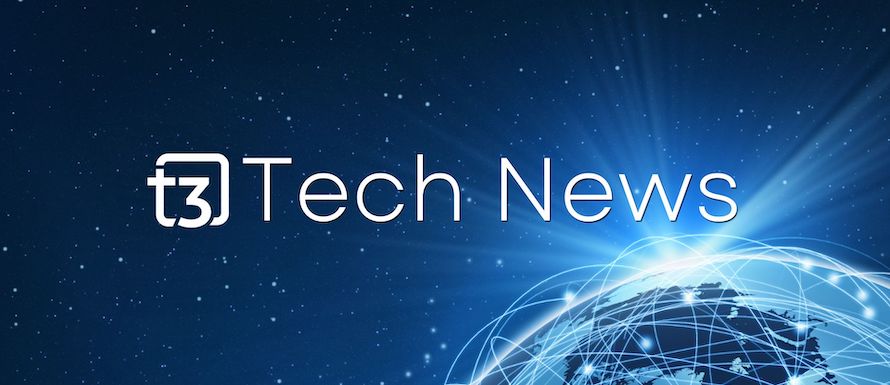Schwab IMPACT: “All In” on Technology
Schwab IMPACT: “All In” on Technology

The theme of this year’s Schwab IMPACT Conference was “All In”, and it was gratifying that the theme extended to technology. When I last visited IMPACT two years ago, Schwab Portfolio Connect was delayed, advisors who had tried Schwab Institutional Intelligent Portfolios were griping about it, and some of the other initiatives like the digital account opening and move money initiatives felt more like beta products than fully developed ones. In addition, the Technology Kiosk area of the exhibit hall was less than vibrant.
What a difference twenty-four months makes. There have been enhancements across the board. Schwab Portfolio Connect is much improved, as is Institutional Intelligent Portfolios. The digital account opening and move money functionality are also much better. Plus the technology section of the exhibit hall was much more vibrant.
For many years, Schwab was the clear leader in advisor technology, but it has felt to me over the last several years that the technology gap between Schwab and some of the competing RIA custodians had narrowed – and in some cases disappeared. After spending most of my time at IMPACT immersed in the technology there, it is clear to me that Schwab has got their technology mojo back! There is a renewed energy around technology throughout the organization, and we are starting to see the results of that energy in their technology products and services. Much of what I saw this year is foundational – not revolutionary – but all of it is important and lays the groundwork for further enhancements soon.
DIGITAL ACCOUNT OPENING
Sometimes it is the seemingly simplest things that can have the greatest impact. Digital account opening is a great example. It is important on so many levels, but perhaps the most important is the client experience. The account opening process is one of the first experiences a new client will have with your firm; it is an early opportunity to make a good impression, or a bad one. The manual, paper-based process is a bad one since either you or your firm needs to enter a lot of information on multiple forms, which then need to be signed by the client. The forms then need to be transmitted to your custodian, where data may need to be re-keyed into another system. All of this manual data entry leads to time delays as well as human error.
Industry wide, there seems to be a consensus that 30-40% of manually completed forms result in NIGO’s (not in good order). That means delays, as well as possibly having to go back to your clients with revised information for a new signature. All in all, not a good experience. It goes without saying that this process is slow and expensive. Schwab estimates that the firm and advisors spend approximately 670,000 hours fixing NIGO’s. Too much staff time is expended, and the slow process means delays before you can start putting the money to work and charging fees.
Schwab’s new digital account opening process takes this manual task and transforms it into a highly automated one. If the information required to open an account already resides on a Schwab system (or a third party one – more on that later), you can simply drag and drop the information into the new account opening workflow. Simply by eliminating the manual re-entry of data, NIGO’s are reduced to about 5%. Digital account opening is not new at Schwab; it has been available for some time. What’s changed is that the process has been re-engineered to be easier and faster. The other really big difference is that this process, and all of the new digital processes that Schwab has developed or will develop in the future, are being made available to partners through application programming interfaces (API’s). What this means is that wherever possible, the functionality that Schwab develops will be available through third party partners.
One example of this new account opening integration is the one with Orion Advisor Services. An advisor using Orion who already has all the relevant client information entered into the Orion platform can launch the digital account opening workflow and port all the necessary information digitally from Orion into the Schwab process. The client then digitally receives a notification, approves the account opening, and the digital envelope is forwarded to Schwab for processing. Schwab then opens the account and digitally transmits an account number back to Orion. If the client approves the application immediately, the entire account opening process can take place in less than ten minutes.
Currently, I am told that approximately 1,500 of the 8,000 advisors eligible to use this system are using it. That number should grow rapidly as advisors discover the benefits of this new system.
DIGITALLY ENABLED ACCOUNT CHANGES
The improvements don’t end there. Currently, Schwab, like most RIA custodians and B/D’s, required a separate digital envelope for each account being opened. Soon, advisors will be able to open multiple accounts with a single envelope and a single digital approval from the client. The plan is to allow the authorization of not just the new accounts, but also the transfer of assets (ToA) form, the MoneyLink move money authorization, the advisor’s advisory agreement and the advisor’s privacy policy – all in a single digital envelope.
Account changes such as changes of address are another small but necessary evil of the business. The paper driven manual process of changing addresses is also slow and time consuming, as well as prone to errors. Schwab currently processes over 100,000 of these a year. The new digital account change allows advisors to change a client address in seconds on a single screen, and the requested change is then digitally sent to the client for approval. A dashboard allows advisors to track all changes in process, and if a client does not respond to a request, the advisor can send the client a reminder electronically. As is the case with account openings, the address change workflow will be made available to third party partners through API’s, and digital address change is only the first of the account changes that will be digitally enabled.
As is the case across the industry, adopting of these new beneficial technologies has been a problem. Schwab is taking steps to address this. First, Schwab offers a Technology Adoption Scorecard that allows advisors to benchmark themselves and their firms with regard to the use of the technologies that Schwab provides. This scorecard is in the process of being enhanced to provide better and more detailed information so that advisors can raise their usage of beneficial Schwab technologies. For the first time at IMPACT, Schwab staffed a Digital Jump Start booth where attendees who were interested in adopting new digital technologies from Schwab could get guidance and request enrollment.
ADDITIONAL TECHNOLOGY IMPROVEMENTS
In addition, there have been a number of improvements to Schwab Institutional Intelligent Portfolios (SIIP). Advisors now have the ability to create model portfolios comprised of either mutual funds or ETF’s, but not a combination of the two. Schwab has also expanded the ability to customize portfolios. A portfolio can now have as many as twenty equity asset classes, twenty fixed income asset classes, and five commodity asset classes or sub-asset classes – which should be more than enough for everyone. You can select a primary and a secondary asset for each asset class to aid in tax loss harvesting workflows. Previously, the SIIP account opening process had to be initiated by the client. Now, it can be initiated by the client or by the advisor. Previously, the conversion of a client from a traditional Schwab account to SIIP was cumbersome; now the process is digital and streamlined.
According to Schwab, SIIP is not just for small accounts. It also appeals to tech savvy investors and those who are focused on keeping costs low. The improvements to SIIP appear to be paying off: Schwab is adding 3-5 firms a week to the SIIP platform.
Portfolio Connect, Schwab’s Free portfolio management and accounting solutions launched in April, and they now have over 550 firms using it. The folks I talked to at Schwab are very enthusiastic about it. I’m somewhat optimistic, but I’m curbing my enthusiasm for now. On the positive side of the ledger, Portfolio Connect works well for assets custodied at Schwab, it removes the need for downloads and reconciliation, it can handle most common billing situations, multiple enhancements are planned, and yes – it’s free.
On the negative side of the ledger, the reporting capabilities and the customization options are limited, it’s not multi-custodial, you can’t even bring in aggregated assets such as a client’s 401(k) through any of the popular aggregation services, it has limited third party integrations, and it has no rebalancing capabilities at the moment.
So, if you are a smaller firm with limited needs and a limited budget, Portfolio Connect is a great deal. If your needs are more complex, it is unlikely to work for you. Addepar, Advent, Envestnet and Orion have nothing to fear from Portfolio Connect, nor should they. The product was never designed to compete with the more robust solutions.
TECHNOLOGY THEMES DISCUSSED
There were some other interesting technology related themes that were discussed at Schwab IMPACT: Zero commission trades and fractional shares were certainly popular topics of discussion. What’s the technology connection? These developments open new opportunities for innovation, and in order for that innovation to take place, someone will have to create the software to support it.
There was also talk at the conference about Schwab getting into banking and lending. This too will create opportunities for Schwab to leverage their digital expertise in order to provide a better end client experience. It will also likely open up new opportunities for third party providers to consume the additional data points into their software applications and to initiate new workflows.
Although there was no single blockbuster announcement coming out of IMPACT this year, my overall impression was positive. Schwab is clearly hoping to accelerate their move and their advisors’ move to a much more efficient, digital first environment to lower costs and improve productivity. While it is true that every major RIA custodian and many broker/dealers are striving towards similar goals, it feels like Schwab is pulling ahead in some areas, and I get the impression that the pace of innovation at Schwab is accelerating – so I expect more enhancements to be coming soon.


